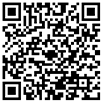
Japan on Wednesday picked the Chinese character "disaster" to symbolize 2018, a year that saw deadly floods, strong earthquakes and heavy storms hit the country.
Japanese television broadcast the annual event live when Seihan Mori, head monk of the Kiyomizu temple in Kyoto, wrote the character on traditional washi paper in dark ink.
"Many people experienced the threat of natural disasters such as earthquakes, heavy rain, typhoons and heat waves (in 2018)," the Japan Kanji Aptitude Testing Foundation, the event organizer, said in a news release.
Since 1995, JKATF has conducted nationwide polls to pick a Chinese character, known as kanji, that best sums up the mood and events of each year.
This year, over 190,000 people participated in the poll and some 21,000 of them voted for "disaster".
The Chinese character for "Peace" and also the first character in the word "Heisei", the current era in Japan, came at second place this year as the Japanese Emperor Akihito will abdicate the throne in April 2019 after reigning for 30 years.
Worst flooding, heat wave
A series of natural disasters slammed the country this year, starting with the worst flooding in decades that killed at least 200 people in July, with western Okayama, Hiroshima and Yamaguchi being the hardest hit.
Also in July, more than 65 people died in a heat wave in central Japan and more than 22,000 people were taken to hospital. Tokyo registered temperatures above 40 C for the first time.
The strongest typhoon in 25 years, known as Jebi, hit Japan in September, killing at least seven and injuring 200. It swept a tanker into a bridge in Osaka Bay and tore off a railway station roof in Kyoto.
During the same week, the northern island of Hokkaido was hit by a magnitude 6.7 earthquake, leaving 41 dead, causing landslides and some 1.6 million residents were out of power for several days.
"It was really scary at that time. The power went out immediately and I spent days without electricity at home," said Zhou Huazhe, a 30-year-old Chinese who lived in Sapporo.
AFP contributed to this story.
 Others
Others
-

Like
(0)















I have something to say